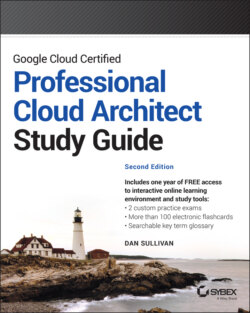Читать книгу Google Cloud Certified Professional Cloud Architect Study Guide - Dan Sullivan - Страница 50
Exam Essentials
ОглавлениеAssume every word matters in case studies and exam questions. Some technical requirements are stated explicitly, but some are implied in business statements. Review the business requirements as carefully as the technical requirements in each case study. Similarly, when reading an exam question, pay attention to all the statements. What may look like extraneous background information at first may turn out to be information that you need to choose between two options.
Study and analyze case studies before taking the exam. Become familiar with the case studies before the exam to save time while taking the text. You don't need to memorize the case studies, as you'll have access to them during the test. Watch for numbers that indicate the scale of the problem. For example, if you need 10 Gbps, then you should consider a Cloud Interconnect solution over a VPN solution, which works up to about 3 Gbps for each VPN tunnel.
Understand what is needed in the near term and what may be needed in the future. For example, we don't have specific MLOps workflows in the TerramEarth case study. Initially, predictions may be based only on structured data, but some vehicles may have cameras to create images of machine components or the operating environment. In the future, there may be an opportunity to use images of operating environments to automatically detect a problem in the environment that could damage the vehicle. In that case, AutoML Vision Edge may be useful for performing image classification in real time. This requirement is not stated, and not even implied, but it is the kind of planning for the future that architects are expected to do.
Understand how to plan a migration. Migrations are high-risk operations. Data can be lost, and services may be unavailable. Know how to plan to run new and old systems in parallel so that you can compare results. Be able to identify lower-risk migration steps so that they can be scheduled first. Plan for incremental migrations.
Know agile software development practices. You won't have to write code for this exam, but you will need to understand continuous integration/continuous delivery and how to maintain development, test, staging, and production environments. Understand what is meant by an infrastructure-as-code service and how that helps accelerate development and deployment.
Keep in mind that solutions may involve non-Google services or applications. Google has many services, but sometimes the best solution involves a third-party solution. For example, Jenkins and Spinnaker are widely used tools to support continuous integration and deployment. Google Cloud has a code repository, but many developers use GitHub. Sometimes businesses are locked into existing solutions, such as a third-party database. The business may want to migrate to another database solution, but the cost may be too high for the foreseeable future.
